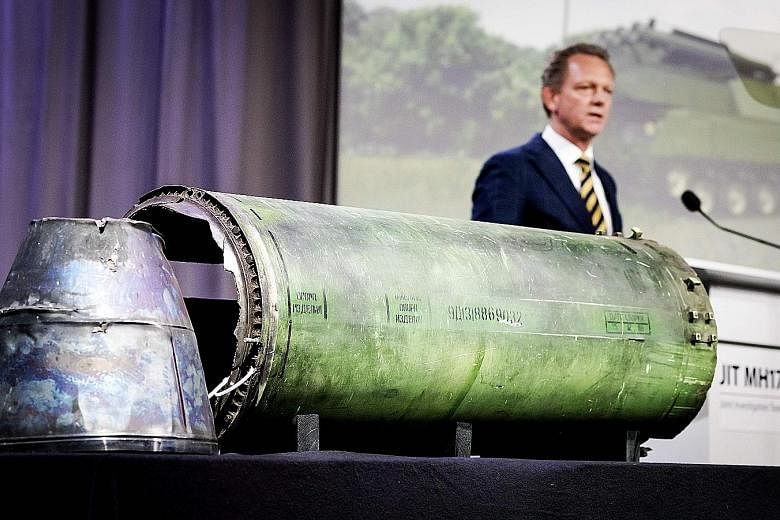BRUSSELS • A Dutch-led international team of investigators said a missile that downed a Malaysia Airlines jetliner over eastern Ukraine in 2014 came from the Russian military, opening the possibility that Dutch prosecutors could sue the Kremlin in connection with the attack that killed all 298 on board.
The long-running inquiry already established that a Russian-made Buk anti-aircraft missile downed flight MH17, but it had not previously made a direct link to the Russian military.
Criminal charges against the Russian military or Russia's government would probably exacerbate tensions between the Kremlin and the West even further, implicating Russian officials in the death of European tourists who were on their way to Kuala Lumpur.
The July 17, 2014, incident led to a crushing round of Western sanctions against Russia.
Since then, the Kremlin has clashed with Europe and the United States on issues ranging from Russia's support for Syrian leader Bashar al-Assad, the attempt to influence the 2016 US presidential election, and the March nerve agent poisoning of a former Russian spy in Britain.
The investigative team "has come to the conclusion that the Buk TELAR by which MH17 was downed originated from the 53rd Anti-Aircraft Missile Brigade from Kursk, in the Russian Federation", Mr Wilbert Paulissen, the head of the crime squad of the Netherlands' national police, said yesterday.
"All of the vehicles in the convoy carrying the missile were part of the Russian armed forces."
However, they left open the possibility that the missile could have been fired by another party.
Rebel leaders said at the time they were receiving military assistance from Russia. Investigators have been working to determine whether Russian troops shot the missile or whether it was Ukrainian rebels to whom the anti-aircraft system had been supplied.
The team said yesterday that the Buk missile system was towed onto Ukrainian territory shortly before the attack and towed back onto Russian territory shortly afterwards.
Mr Paulissen said the investigators possessed "legal and convincing evidence that will stand in a courtroom".
At the time of the attack in July 2014, the battlefield in eastern Ukraine was seething with different armed groups. That spring, separatist fighters opposed to a new pro-Western government in Kiev seized control of broad patches of territory in Ukraine's eastern industrial heartland.
They were operating with Russian support, and Western journalists also spotted at least some Russian troops moving into eastern Ukraine that summer. The Russian government has long denied direct involvement in the conflict.
Flight MH17 took off from Amsterdam and passed over eastern Ukraine on its way to Kuala Lumpur, packed with Dutch tourists.
In video footage from immediately after it was shot down, rebel fighters can be seen gathering in the sunflower fields where the bulk of the fuselage fell, celebrating what they thought was the downing of a Ukrainian military aircraft. Their celebration turned to concern when they realised that it was a civilian jetliner.
Dutch Prime Minister Mark Rutte cut short a trip to India to return in time for a Cabinet meeting today to discuss the latest findings in the inquiry, the ANP news agency reported.
WASHINGTON POST, REUTERS

